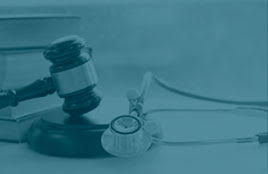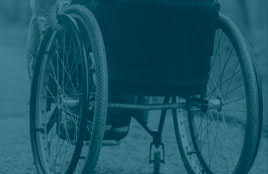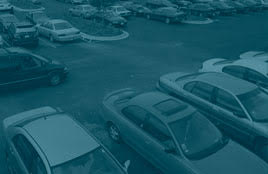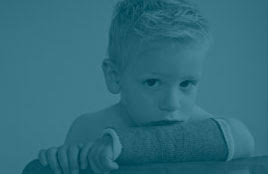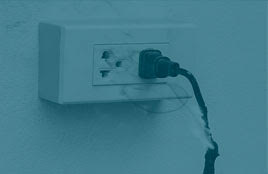You or your loved one is in the hospital, and there is all the usual concerns-will a surgical procedure go well? Will the treatment work? Will this medicine cure my problem? Perhaps you never thought to worry about the question “is the food that has just been delivered on my hospital tray going to cause me harm?”
Delivering the right diet to the right patient at the right time is a team effort in the hospital. The doctor orders the type of diet that you are supposed to receive. The nursing staff or a unit secretary enters that order into the computer for dietary to see. Nurses and dietary staff bring the meals and put the trays in front of the patients. There are a lot of points in time when this seemingly simple process can go astray with potentially devastating effects. During routine review of Pennsylvania Patient Safety Reporting System (PA-PSRS) reports (the Pennsylvania state organization that receives reports from hospitals regarding concerns for patient safety), analysts noted several events involving patients who received incorrect diets, resulting in harm.
The potential harms have come from things such as receiving foods that a patient is allergic to, receiving the wrong tray which contains food the patient is either allergic to or should not have, or the patient is given food that they should not receive due to their underlying medical condition.
Analysts identified 285 dietary events submitted through PA-PSRS. The majority of dietary events involved patients who received a tray containing a food item to which the patient was allergic; more than three-quarters of these allergies were both known and documented in the medical record prior to the event. In 8 of the 181 events where patients with a known food allergy ate the food they were allergic to, serious harm occurred, resulting in emergency administration of epinephrine or other medications, transfer to a higher level of care, and/or intubation.
Actual examples of allergy events with injury from eating food off the patient tray where it was known that the patient had an allergy:
The patient entered via emergency department. Allergy to seafood was documented in the ER record. The Patient was admitted to the hospital, the seafood allergy was not documented in the medical record. The Patient received fish on their food tray during admission and suffered an anaphylactic reaction, requiring multiple IV medications, IM epinephrine, and ICU observation. The patient’s condition improved and returned back to baseline. The Seafood allergy was updated in the medical record and an allergy band was placed on the patient’s wrist. Both the nurse and the physician were reeducated and counseled regarding completion of the nursing assessment, as well as confirming patient’s allergies and entering them in the patient’s electronic record.
A patient received a fruit cup on food tray that contained pineapples. The patient was allergic to pineapples. This pineapple allergy was documented in the electronic medical record; however, it was noted as a drug allergy, not a food allergy. So the pineapple allergy was not communicated to the dietary department. The patient did eat the fruit, except for the pineapple. The patient still experienced an allergic reaction requiring intubation and transfer to the critical care unit. The patient was extubated and was eventually discharged to home.
A Patient was allergic to fish. The fish Allergy was listed during admission only as drug allergy, but not a food allergy. This Patient was slightly less alert, related to treatment, and did not realize he was eating fish received on his dinner tray. The Patient had an immediate allergic reaction to the fish and was given medication and transferred to ICU for upper airway edema and required intubation .
Actual Examples of patients who received a different diet than was ordered, such as a diabetic, low-salt, or thickened diet, and were harmed, are as follows:
A patient was on a pureed-thin liquid diet. They received a regular tray and ate the meal when it should have been pureed.
A patient was given [food supplement A] with her lunch–[food supplement B] had been ordered. As a result, the Patient’s blood sugar went up to 354 that night (extremely elevated). Food services apparently placed the wrong supplement on the meal tray.
The patient received the wrong diet on their lunch tray. Patient was ordered a dysphagia diet [for patients with difficulty swallowing] with nectar-thick liquids and instead received a whole chicken breast and a piece of white bread on the tray.
Actual Examples of patients who received a tray meant for another patient:
dietary worker gave the patient the wrong food tray with another patient’s name on it. The food order was correct in the computer system and labeled correctly but given to the wrong patient. Physician notified.
Patient on clear liquids due to an acute gastrointestinal bleed. Given a dinner tray belonging to another patient who was on a cardiac low-sodium diet. The Patient and family stated no one asked the patient’s name. The Patient ate some of the food from the wrong dinner tray.
The Patient’s diet was listed in computer as gluten-free (patient has gluten allergy); however, the patient’s lunch tray slip listed their diet as regular house diet. There were two patients on a hospital unit with the same last name, and the other patient had received the gluten-free diet instead.
Actual Examples of patients who received trays despite NPO (nothing by mouth) orders are as follows:
Staff put a verbal order for soft diet tray for a patient who was to be NPO. Patient was given a soft diet. Patient aware of NPO status and informed the dietician.
Patient came in with PEG tube (feeding tube into their stomach). The patient was NPO and on tube feedings. Dietary staff came up and brought a tray.
Patient ordered NPO. Written on whiteboard in patient’s room. Dietary gave patient breakfast tray and patient ate the tray.
There been limited publications and guidelines to aid hospitals in the reduction of dietary errors. What little publications there are focus on food allergies and patient satisfaction.
What Can You Do To Protect Yourself Against Dietary Error In The Hospital?
Remember that there are many people involved in getting that food on that tray in front of you in the hospital. Because so many people are involved, errors can happen. Here’s a few tips to help you protect yourself:
- Make sure you or a caregiver lets everyone (doctors, nurses, other medical attendants) know if you have a food allergy. An accurate medical history is very important.
- Make sure the person taking your food order and the person delivering the food order confirms who you are by using two types of patient identifiers (for example, asks your full name and birthdate).
- If you receive a food tray before being asked what it is you would like to eat, make sure you let the person know you did not order the food he/she is delivering. This is especially important if you have a food allergy.
- If you notice something on your food tray that you did not order, or that you know you are allergic to, do not eat it. Let someone know right away if you receive a food tray that you did not order.
- Do not be afraid to ask questions or tell someone you did not receive the right food tray. If something does not seem right, let someone know right away.
- While you are in the hospital, follow the same diet guidelines as prescribed by your doctor at home. If hot dogs are not good for you at home, they’re not good for you in the hospital either.
“If We Could Give Every Individual The Right Amount Of Nourishment And Exercise, Not Too Little And Not Too Much, We Would Have Found The Safest Way To Health.” – Hippocrates

